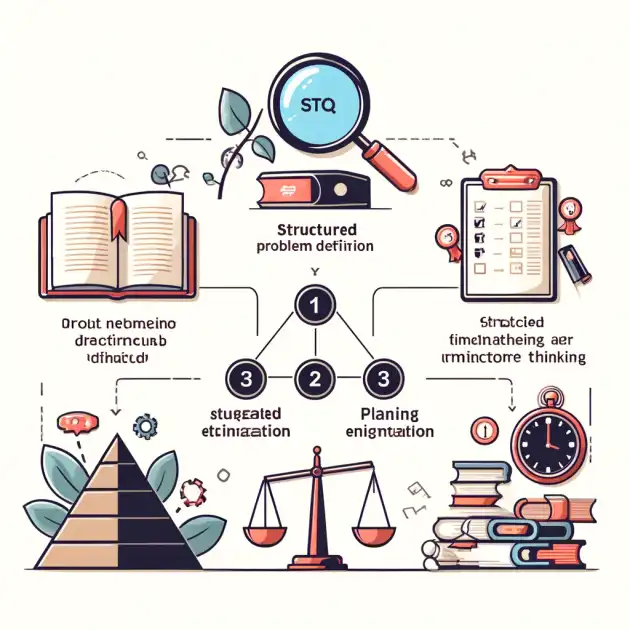A Four-Step Framework for Structured Problem Solving
In the realm of professional problem-solving, structure is king. From consultants to managers, the ability to efficiently solve complex issues is a pivotal skill. To aid this process, I've devised a four-step framework that ensures you approach problems systematically, making the solution process as clear and effective as possible.
PermalinkStep 1: Define the Real Problem—Get to the Key Issue
The first and most crucial step in structured problem solving is accurately defining the problem. Misunderstanding the issue at hand can lead to wasted effort and resources. Here's how you can define the problem accurately:
Describe the problem using SCQ (Situation, Complication, Question): Begin by laying out the Situation — the context within which the problem exists. Follow this by identifying the Complication — the specific issue that disrupts the normal course of events. Finally, formulate a clear Question that needs to be answered to address the complication. This method ensures a focused and actionable problem statement.
Reframe the problem: Often, the way a problem is initially presented isn’t the way it should be tackled. Try to de-constrain the problem by removing assumed limitations or thinking from an entirely different perspective. This reframing can often lead to innovative solutions that were not apparent initially.
PermalinkStep 2: Generate and Structure Hypotheses—Use the Pyramid Principle
Once the problem is clearly defined, the next step is to generate and structure hypotheses:
Generate a core hypothesis: This is a potential solution or answer to the defined question. It should be direct and as simple as possible, serving as a starting point for further exploration.
Develop a hypothesis tree: Using the Pyramid Principle, structure your hypotheses in a logical order starting with the core hypothesis at the top. This tree should be MECE (Mutually Exclusive, Collectively Exhaustive), meaning it should cover all possible scenarios without overlapping, ensuring thorough exploration of potential solutions.
PermalinkStep 3: Plan Your Work—Translate Hypothesis Tree to Work Plan
With your hypotheses structured, you need to plan how to test them:
Develop analyses that could prove the hypotheses: Identify specific analyses, research, or experiments that can validate or refute each branch of your hypothesis tree. This may involve qualitative analysis, quantitative data, or case studies.
Estimate time required for these analyses: Planning is not just about what to do but also estimating how long it will take. This ensures that the project moves forward efficiently and you allocate resources appropriately.
PermalinkStep 4: Prioritise Analysis—Use Logic and “Back-of-the-Envelope” Where Appropriate
The final step is to prioritize the analyses based on their potential impact and the effort required:
Apply the 80/20 rule: Not all analyses will be equally useful. Focus on the 20% of efforts that will provide 80% of the value. This rule helps in maximizing the impact of your work while minimizing unnecessary effort.
Back-of-the-envelope calculations: Before diving deep into time-consuming analyses, use simple calculations or logical reasoning to estimate the potential outcomes or impact. This can often save time and highlight the most promising avenues to pursue further.
By following this structured four-step framework, you can approach complex problems with confidence and clarity, ensuring that your efforts lead to effective and efficient solutions. This systematic approach not only streamlines the problem-solving process but also enhances the quality of the decisions made.
